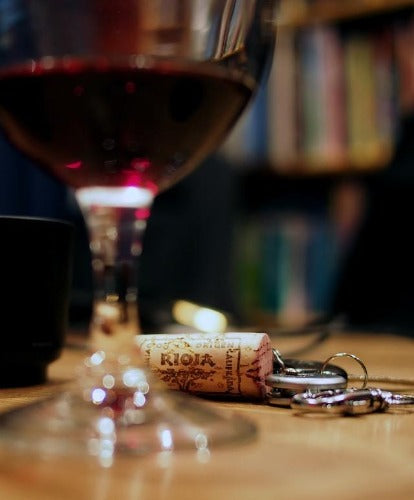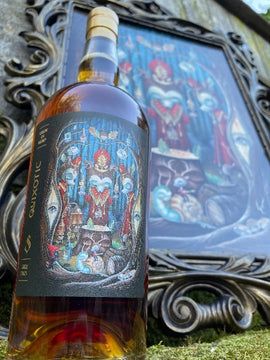Few wine regions anywhere in the world have as fixed an international identity as Rioja. Located in north central Spain, Rioja has long been internationally famous for plush and fruity reds, made from the native Tempranillo and Garnacha varietals, and aged in American oak. This style, known as Traditional Rioja, is, ironically, a relatively recent innovation, and largely the result of foriegn influence. In the 1860s, the twin scourges of phylloxera and mildew sent French vignerons scrambling south to make wine, and most ended up in nearby Rioja, bringing the méthode bordelaise to bear on local soils. At the time, barrel-grade European wood was difficult to come by, and expensive, so the Riojanos turned to America’s vast forests for cheap wood, which imparted to the wine the notes of vanilla, coconut and dill so closely associated with Rioja today. While none of this was a bad thing, the combination proved so popular that it necessitated large industrial scale production of blended grapes, obscuring the incredible the breadth and complexity of climates and soils in the region. Fortunately in the last 30 years, many native winemakers have chosen to focus on small, hyper-local viticulture and reviving older local traditions - not so much rejecting Traditional Rioja, as integrating it into an approach that more accurately records the terroir. This month, we are featuring wines from two of our favorites: a 100% Tempranillo Red from Finca Allende, and a Rioja Blanco by Algre Valgañón.
Once considered Rioja’s enfant terrible, Miguel Ángel de Gregorio today is arguably the region’s foremost terroir obsessive, dedicated to the proposition that Rioja’s diverse soils and micro-climates more closely resemble Burgundy than Bordeaux. The scion of multiple generations of vintners, de Gregario founded Finca Allende in 1986, in the hillside town of Briones in the Rioja Alta subregion, attracted by the area’s unique combination of cool Atlantic-dominated temperatures and gravely red clay soils. Since then, he has helped revitalize Rioja winemaking, eshcewing blended grapes from different sites and villages - a method he estimates is responsible for 99% of Rioja bottlings - to focus exclusively on the 120 acres of Tempranillo, and smaller patches of Garnacha and Graciano, he has assembled over the years. De Gregorio firmly believes that great wine is created in the vineyards; his goal in the cellar is to avoid damaging the grapes he so carefully cultivates. To that end, he uses vertical wooden presses that slowly extract the juice from the pomace, in contrast to pneumatic presses that, in his opinion overpress. He also ages in French, rather than American oak, to frame and foreground the tannic character of his iron rich soils. The result is serious, structured and distinctive Rioja, with great depth of fruit well balanced by earthy spice.
Oscar Alegre and Eva Valgañón make wine 11 miles northwest of Finca Allende, in Haro, the coolest (weather-wise) part of Rioja, in the shadow of the Obarenes Mountains. Prior to their first vintage in 2014, both spent years studying the specific terroir and winemaking traditions of their home region. They interviewed the surviving vintners of Traditional Rioja’s “Golden Age” (1940-1970), learning about the best vineyard sites and how to blend different varietals from them together to craft more compelling wines. They also researched, and subsequently employed, techniques pioneered by monks making wine in Rioja centuries ago, such as the inclusion of ripe stems in the grape must during fermentation and the use of neutral French oak for aging. The idea is to marry the best of Traditional Rioja with methods from Rioja’s ancient ancestral past. As Oscar says: “We are not trying to make the greatest wine in Rioja. We only want to make a true wine–a wine that shows off our land, and all the knowledge that we’ve inherited from earlier generations.” Oscar and Eva have only just gotten started, but quality of the 2019 Blanco suggests they’ve already accomplished this modest goal, and we can’t wait to see where they go next.
Cheers,
The PlumpJack Wine Team
|
2015 Finca Allende Rioja |
|
|
Region / Country of Origin: Briones, Rioja Alta, Spain |
About the winery Finca Allende is located in an ancient 17th century manor, set in a medieval town square within the heart of Rioja Alta. Roughly translated as ‘further,’ Allende’s philosophy is to go further towards creating the perfect Rioja. The majority of vines are plowed with mules and grapes are hand-harvested, triple-selected and manually punched-down before undergoing extensive underground aging in both barrel and bottle. About the winemaking: The vines that go into the 2015 Finca Allende Tempranillo are planted around the village of Briones at an average elevation of 1,900 feet, in deep iron and calcium-rich soils. Briones’ proximity to the Atlantic Ocean and nearby Sierra Cantabria mountain range provides the perfect combination for an ideal phenolic maturation: cold nights, warm days and four distinct seasons that cater to an ideal life cycle of the vine. Vineyards are estate-grown, organically fertilized, treated sustainably and often plowed by mules. During harvest, whole bunches of grapes are transported to the winery and triple selected before a whole berry, cold, prefermentary maceration takes place, followed by temperature-controlled alcoholic fermentation occurs with native yeasts. Malolactic fermentations are performed in stainless steel tanks and the resulting wine is aged for 14 months in Bordelese French oak barrels, which are racked every 4 months. After aging, the wine is bottled without filtration or clarification. Tasting Notes: Intense cherry color with purple edges; this wine contains powerful fruit aromas of blackberry, cranberry and other forest fruit, coupled with perfectly integrated notes of oak, cedar and tobacco. On the palate this wine has great structure and balance, which combines fresh fruit and well-integrated acidity, to ensure excellent aging potential. |
|
Winemaker: Miguel Ángel de Gregorio |
|
|
Price: $24 btl/$259.20 case |
|
|
Suggested Food Pairing: roast lamb, hard cheeses, prime rib steak, duck, cotechino, grilled eggplant. |
|
|
2019 Algre Valgañón Rioja Blanco |
|
|
Region / Country of Origin: Rioja, Spain |
About the Winery: Oscar and Eva met while studying enology in Italy, and they eventually married. After returning to Spain, Eva found work as a winemaker and Oscar worked in export for some of Spain’s most famous producers. Both families own prime vineyards, and the young couple always held the dream of crafting their own wine from them. In his export roles, Oscar traveled throughout Europe, and was exposed to many of its ancient wine traditions. About the winemaking: Very old 90% Viura and 10% young Garnacha from a vineyard in Galbárruli. Grapes are slow-pressed with their stems and fermented in stainless before transfer to wood. Aged 10 months in used French demi-muids. Tasting Notes: A heady mix of precocious fruit coupled with a muscular mouthfeel and terrific length. Fennel and licorice aromas, some waxy apples and a white pepper twist. The palate is serious & austere, polished and velvety. |
|
nemaker: Oscar Alegre and Eva Valgañón |
|
|
Price: $25 bottle / $270 case |
|
|
Suggested Food Pairing: Paella Roast Salmon Idiazabal Cheese Gazpacho |
|




